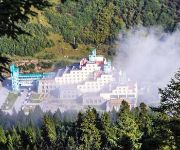Facts and Data
Webpages:
Official Unesco Page
Protectedplanet.net
Basis Data:
Unesco World heritage since: 1992
Size of heritage: 60,000 ha
Coordinates:
Longitude: 103,822°
Latitude: 32,754°
Summary
Situated in the north-west of Sichaun Province, the Huanglong valley is made up of snow-capped peaks and the easternmost of all the Chinese glaciers. In addition to its mountain landscape, diverse forest ecosystems can be found, as well as spectacular limestone formations, waterfalls and hot springs. The area also has a population of endangered animals, including the giant panda and the Sichuan golden snub-nosed monkey.
Location on Map
Show bigger map on Openstreetmap
Huanglong Scenic and Historic Interest Area: A Natural Wonder in China
The Huanglong Scenic and Historic Interest Area, located in Songpan County, Sichuan Province, is a UNESCO World Heritage site renowned for its breathtaking natural beauty and rich cultural heritage. Spanning over 700 square kilometers, this area is home to a unique combination of colorful travertine pools, snow-capped peaks, lush forests, and diverse wildlife.
History
The history of Huanglong dates back thousands of years. It has long been considered a sacred place by the local Tibetan and Qiang ethnic groups, who believe that the area is inhabited by deities and spirits. The name "Huanglong" translates to "Yellow Dragon," which is derived from the shape of the travertine pools resembling a dragon winding through the valley.
During the Tang Dynasty (618-907 AD), Huanglong gained recognition as a Buddhist sanctuary. Monks built temples and pavilions, blending their religious beliefs with the awe-inspiring natural surroundings. The area became an important pilgrimage site for Buddhists seeking spiritual enlightenment.
Over the centuries, Huanglong continued to attract visitors from far and wide, including poets, scholars, and explorers. Its unique geological formations and vibrant colors fascinated many, leading to its designation as a national scenic area in 1982 and a UNESCO World Heritage site in 1992.
Current State
Today, Huanglong remains a popular tourist destination, drawing millions of visitors each year. The main attraction is the Huanglong Valley, a 3.6-kilometer-long stretch filled with terraced travertine pools of various sizes and shapes. These pools, formed by the deposition of calcium carbonate-rich spring water, create a mesmerizing landscape of cascading waterfalls and vibrant hues of blue, green, and yellow.
Visitors can explore the valley by following a well-maintained wooden boardwalk that winds its way through the pools and offers stunning views at every turn. The highest point in the valley is the Xuebaoding Peak, standing at an impressive 5,588 meters above sea level. Its snow-capped summit adds to the area's picturesque beauty.
In addition to its natural wonders, Huanglong is also home to a diverse range of flora and fauna. The dense forests surrounding the valley are inhabited by rare species such as the giant panda, golden snub-nosed monkey, and Sichuan takin. The area is a haven for nature lovers and wildlife enthusiasts.
To preserve the ecological integrity of Huanglong, strict conservation measures have been implemented. Visitors are required to follow designated paths and refrain from touching or damaging the travertine pools. The local authorities also actively promote sustainable tourism practices to minimize the impact on the fragile ecosystem.
Overall, the Huanglong Scenic and Historic Interest Area stands as a testament to the awe-inspiring beauty of nature and the rich cultural heritage of China. Its unique geological formations, vibrant colors, and diverse wildlife make it a must-visit destination for anyone seeking a truly unforgettable experience.
Hotels and places to stay
Seercuo International Hotel - Aba Autonomous Region
HuaLong Hotel
Videos from the area
Videos provided by Youtube are under the copyright of their owners.







